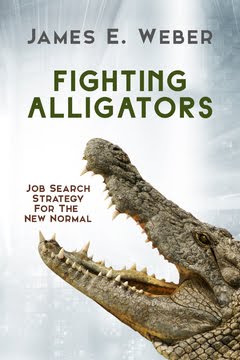“He who has a why can endure any how.” Frederick Nietzche
My last post laid out the concept of putting your business plan on a single page. The rationale behind that concept is to focus the freelancers' attention to the most important issues and actions she must take to be successful in her consulting practice. By putting your plan on a single page (POP) you create a graphic that is in your face. The very first issue I listed at the top of the POP, asks the consultant to articulate their "why." In other words, what is your driving motivation, your passion in life that leads you to this line of work?
This concept of "why" wasn't something that I was exposed to in business school, but it became more apparent when I became an entrepreneur. More recently the concept of "why" has moved into the mainstream. A few people I have come to know via YouTube, including Simon Sinek, have done an excellent job speaking to the issue of "why."
From Wikipedia: Simon O. Sinek (born October 9, 1973) is a British/American author, motivational speaker, and marketing consultant. [1]
He is the author of four books including the 2009 bestseller Start With Why: How Great Leaders Inspire Everyone to Take Action (2009). [1] He received a BA in cultural anthropology from Brandeis University [2]
Mr. Sinek asks, “How do you explain why things go well, or not? What is at play?
His presentation on "Why," presents the concept of The Golden Circle, which he labels as "the world's most simple idea." Think of a target with a bulls-eye and two outer rings. The outer ring is what you do. The middle ring is how you do it and the bulls-eye is why you do it.
The Golden Ring
- What you do.
- How you do it.
- Why do you do it? What is your purpose?
The heart of the target area is why you do what you do. It is more important than what you do, or how you do what you do. Sinek goes on to argue that "People don't buy what you do, they buy why you do it!" He says that "The goal is to do business with people who believe what you believe. Why comes first and then you build trust."
- Build loyalty
- Hire people who believe what you believe (they will give their blood, sweat, and tears.)
- Passion, alignment, values
Renee Warren has also written on the concept of “why.”
Ms. Warren is the Co-founder of Onboardly which helps start-ups and entrepreneurial-minded companies with their digital marketing efforts. In her March 23, 2015, article in Entrepreneur Magazine she writes that "Knowing your Why will help you stay committed and help others get on board. "Passion is infectious." A great story must be authentic if not dramatic.
She goes on to say that "Entrepreneurs are looking for freedom to do what they think is best.”
“Customers like to feel they are a part of a cause. Draw them into your cause.”
"Why drives you, hopefully, it is not money. Unless you are 100% committed you won't have the passing/drive to make your business a success."
“To find your why, consider what people ask you to do, or to help them with, Usually for free. Can those things become a viable business?"
She mentions Steve Paolina, American Self-Help Author who asks, “What is my purpose in life? Keep Writing down answers until one makes you cry.”
Warren ends her article with, "Most importantly, get started doing something.”
Margie Warrell has gained unique insights into what it takes to defy the odds and lead with authority. A bestselling author and mother of four teens with a background in business and psychology, Margie is passionate about empowering leaders to engage in bigger conversations, take braver risks and make a bigger mark.
Ms. Warrell states that “a clear sense of purpose enables you to focus your efforts on what matters most, compelling you to take risks and push forward regardless of the odds or obstacles.” “A quick glance at employee engagement statistics points to a crisis of purpose and meaning on an unprecedented level.” She suggests that to arrive at your "why," you should take stock or your talents, values, purpose, and passions.
Beginning your plan with your “why” is fundamental to your success. It is your driving force that will keep you going when times are tough. It is a passion which your clients can relate to and will create a bond. Everything you do in your career as an independent consultant will be built on your “why.” It is the foundation for the business you are building.
Thank you for visiting my blog.
Your feedback helps me continue to publish articles that you want to read. Your input is very important to me so please leave a comment.
Jim Weber, Managing Partner
Current Assignments
1. COO- Atlanta-based Casual Dining Restaurant Company - New
2. Controller - Atlanta-based Consumer Products - Digital Company - Completed
3. Director of Biz Dev, Atlanta-based B2B Professional Services Company: Completed
4. Payroll-Benefits Manager, Atlanta-based Retail Company: Complete
5. Senior Accounting Manager – Atlanta-based Manufacturer. Complete
6. Controller - Atlanta-based Restaurant Company: New
7. Outplacement Assignment - Atlanta-based Manufacturer: Complete








